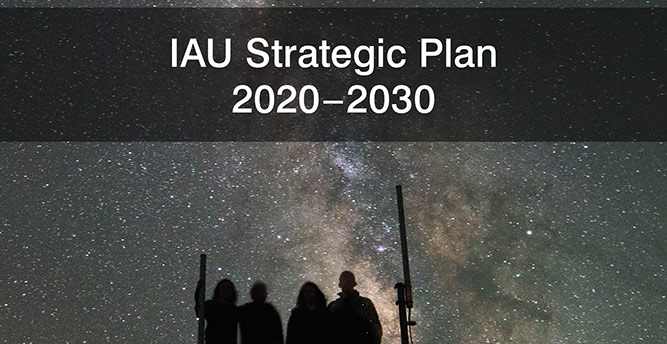- News
- Science
- Scientific Bodies
- Divisions
- Commissions
- Commission A1 Structure
- Commission A2 Structure
- Commission A3 Structure
- Commission A4 Structure
- Commission B1 Structure
- Commission B2 Structure
- Commission B3 Structure
- Commission B4 Structure
- Commission B5 Structure
- Commission B6 Structure
- Commission B7 Structure
- Commission C1 Structure
- Commission C2 Structure
- Commission C3 Structure
- Commission C4 Structure
- Commission C5 Structure
- Commission D1 Structure
- Commission E1 Structure
- Commission E2 Structure
- Commission E3 Structure
- Commission E4 Structure
- Commission F1 Structure
- Commission F2 Structure
- Commission F3 Structure
- Commission F4 Structure
- Commission G1 Structure
- Commission G2 Structure
- Commission G3 Structure
- Commission G4 Structure
- Commission G5 Structure
- Commission H1 Structure
- Commission H2 Structure
- Commission H3 Structure
- Commission H4 Structure
- Commission J1 Structure
- Commission J2 Structure
- Commission J3 Structure
- Commission X1 Structure
- Commission X2 Structure
- Past Commission Organising Committees
- Working Groups
- Centres
- Scientific Meetings
- Rules & Guidelines
- General Assemblies
- Meeting Proposals
- Future IAU Meetings
- General Assemblies
- EC Meetings
- Officers' Meetings
- Regional Meetings
- Symposia
- Focus Meetings
- Institutional Meetings
- IAU Offices Meetings
- IAU-Sponsored Meetings
- Letters of Intent submitted for 2024
- Letters of Intent submitted for 2023
- Letters of Intent submitted for 2022
- Letters of Intent submitted for 2021
- Letters of Intent submitted for 2020
- Past IAU Meetings
- Templates
- Other Meetings
- Grants & Prizes
- Scientific Bodies
- Publications
- IAU Publications
- IAU Strategic Plan
- Symposia
- WGSBN Bulletins
- Regional Meetings
- Information Bulletins/Catalyst
- E-Newsletters
- Focus Meetings
- Transactions A
- Transactions B
- Related Publications
- GA Newspapers
- CAPjournal
- IAU Books
- Brochures
- IAU Offices
- WG Reports
- Commission Reports
- Division Reports
- Past IAU Publications
- Rules, Guidelines and Instructions for Proceedings
- Publishers
- IAU Publications
- Administration
- About the IAU
- Statutes & Rules
- IAU Policies
- IAU Executive Bodies
- IAU Secretariat
- Resolutions
- Members Administration
- Administrative Dates & Deadlines
- International Organisations Relations
- Donate to the IAU
- Training in Astronomy
- Astronomy for Education
- Astronomy for Development
- Astronomy for the Public
- Office for Astronomy Outreach
- FAQ
- Themes
- Satellite Constellations
- Astronomy in Everyday Life
- How to Report a Discovery
- Careers in Astronomy
- Defining our Place in the Cosmos
- The Constellations
- Light Pollution
- Measuring the Universe
- Near Earth Objects
- How to Participate in Astronomy Research
- Naming of Astronomical Objects
- Naming of Exoplanets
- Buying Star Names
- Naming Stars
- Pluto and the Solar System
- IAU Member Statistics
- Our Moon: the Moon
- Meteors & Meteorites: The IAU Definitions of Meteor Terms
- UNESCO-IAU Portal to the Heritage of Astronomy
- Social Media
- Past Events
- Call for Online Resources
- Astronomy@Home Awards
- Contact
IAU Focus Meetings (GA)
FM 7: Stellar Physics in Galaxies throughout the Universe
Start date/time
August 12, 2015
End date/time
August 14, 2015
Place
Honolulu,
United States
Contact
Claus Leitherer
leitherer@stsci.edu
Event website
Coordinating Division
Division G Stars and Stellar Physics
Other Divisions:
H, J
Co-Chairs of SOC:
Claus Leitherer (STScI)
Stephane Charlot (IAP)
Claudia Maraston (Univ. of Portsmouth)
Topics
- Single and binary-star evolution
- Stellar rotation and its impact on stellar evolution
- Release of ionizing radiation and chemical elements into the ISM
- Stellar evolutionary phases and their signatures in galaxy SED’s
- Stellar yields and the metallicity evolution versus redshift
- Age-dating of galaxies over cosmic time
Rationale
Stars are the powering sources of galaxies throughout the universe. Stellar nucleosynthesis is the main energy source for the extragalactic sub-mm background light, dominating the contribution by gravitational energy (i.e., black holes). Galaxies are observed via their stellar content, either directly or through light processed by gas and dust. Stellar ionizing radiation escaping from galaxies is the likely source of the reionization of the early intergalactic medium. Arguably, stellar astrophysics and cosmology are in a close, complex relationship.
The advent of the new generation of 10m class telescopes with highly efficient multi-object spectrographs and wide-field cameras working at visual and near infrared light has led to a renaissance of stellar spectroscopy as a tool to study galaxies. The determination of the chemical composition of galaxies is crucial for constraining the theory of galaxy formation and evolution in a broad cosmological context. However, most techniques to determine the properties of galaxies, nearby and at high redshift, are subject to large systematic uncertainties that are poorly understood. Multi-object spectroscopy and crowded-field photometry of individual stars – the brightest stars in the universe at visual and NIR wavelengths – provide attractive alternatives. The Focus Meeting will review results accumulated over most recent years for galaxies in the Local Group and at high-redshift and will discuss the potential of future work with TMT and E-ELT. Combining the photon collecting power of these next generation telescopes with Adaptive Optics it will be possible to push studies of resolved stellar populations as far as the Coma cluster. With spectroscopy and photometry of the integrated light and simple population synthesis techniques we can reach out much further. This will allow us to test and calibrate stellar models on the one hand, and to make sound inferences on the properties of distant galaxies on the other.
Stars with different initial masses and during different evolutionary stages (AGB stars, red supergiants, Wolf-Rayet stars, Luminous Blue Variables, and Supernovae) are the primary actors of the lifecycle of matter, by enriching the interstellar medium with large amounts of newly synthesized metals and dust grains through winds and explosions. While the key-role of stars in driving galaxy evolution is universally acknowledged, severe uncertainties still affect the quantitative interpretation of the data which exceptionally high-quality surveys have been providing us in the recent years (e.g., HST, GALEX, 2MASS, Spitzer, Herschel). In this context, it has become dramatically clear that a reliable interpretation of galaxy properties, ranging from the local to the high-z universe (e.g. color-magnitude diagrams, star formation histories, masses, ages, chemical abundances, spectral energy distributions), can only be achieved through an accurate description, or at least a physically sound calibration, of the processes occurring in the deep interiors of stars (nucleosynthesis, mixing, convective core overshooting), as well as in their outermost layers (rotation, opacities, atmospheres, pulsation, winds, molecular chemistry, dust condensation and growth).
The last nuclear burning phase for stars less than about 10 solar masses is the AGB. It is during the AGB that stars experience recurrent mixing events that can significantly change the surface composition of the envelope, with observed enhancements in carbon, nitrogen, fluorine, and heavy elements synthesized by the slow neutron capture process (the s-process). These stars release their nucleosynthesis products slowly through stellar outflows or winds, in contrast to massive stars that explode as core collapse supernovae. Of key importance for understanding the contribution of AGB stars to the chemical evolution of galaxies and stellar systems is the impact of stellar modelling uncertainties on the predicted yields and also lifetimes and effective temperatures. These uncertainties include the treatment of convection in stellar interiors, mass loss, opacities, thermonuclear reaction rates, the cause of non-convective mixing in red giant envelopes, and impact of rotation, magnetic fields and a binary companion on the evolution of AGB stars. Observations of AGB stars and their progeny, as well as chemical abundances from populations of stars in our local group of galaxies, can help constrain uncertainties such as mass loss. The results of multidimensional hydrodynamic simulations provide key insights into convection and magnetic fields in deep stellar interiors. The latest measurements from nuclear physics laboratories are putting limits on uncertain nuclear reaction rates. Collaboration between interdisciplinary areas is therefore vital to further our understanding of the evolution and nucleosynthesis of stars.
At the high end of the mass spectrum, the most massive, luminous stars have the radiation pressure to drive strong stellar winds throughout their lifetimes so they lose a significant fraction of their initial mass. The leads to these stars losing all hydrogen to become naked helium stars: Wolf-Rayet stars. While few in number they are important due to their strong stellar winds and high luminosity. They exist across all ages in the Universe, with their spectral feature having been observed in high-redshift galaxies. However, models tend to underpredict the surface temperatures and radii. Then it is difficult to reproduce the range of luminosities from single-star models alone. It is likely that accounting for rotation and binary evolution are vital to fully understand Wolf-Rayet stars. It appears that half to two-thirds of massive stars will have their evolution altered by binary evolution and furthermore the most rapidly rotating stars might be the outcome of mass transfer in binaries. The extreme diversity of evolutionary paths forms two broad pathways: mass loss from the primary star, so a star becomes a helium star where is would not have done as a single star, and mass gain either by transfer of material to the secondary or by the two stars merging. The end result is the production of more hot, luminous stars in a population than expected for single-stars populations. The physical effects of rotation and binaries have important consequences for all stellar phenomena considered in this Focus Meeting. The important questions we must ask are how have single-star models done so well for so long? Then by studying the results of current population synthesis codes that do and do not include the complexities of binary evolution consider the best and simplest method to account for binary evolutionary effects in stellar populations.
The recent era of extragalactic spectroscopic and photometric surveys and fast development of stellar population models has opened an avenue to extract the star formation history of galaxies from their integrated spectra. A new generation of sensitive single- and multi-object spectrographs (such as XShooter and KMOS at the VLT, MOSFIRE at Keck, FMOS at Subaru, and – in the future – NIRSPEC on JWST) are expected to provide increasing numbers of galaxies with sufficient continuum S/N to study stellar spectral absorption features. Diffraction limited observations with 30 – 40-m class telescopes would resolve bright stellar clusters in z ≈ 1 galaxies and carry-out resolved studies on 60 – 100 pc scales at those redshifts. The integrated signal reflects the combined effect of all stellar evolution phases, stellar emergent fluxes and IMF. Although current models of stellar evolution are accurate for the evolutionary phases that numerically dominate the HR diagram, there are many rare phases which are still poorly understood. Ironically, it is those phases that tend to leave the most conspicuous signatures in the spectra and spectral energy distributions of galaxies. Those phases interfere with our ability to extract ages – and thus star formation history – from integrated spectra, such as AGB and Wolf-Rayet stars, blue stragglers, AGB-manqué and blue horizontal branch stars. How to disentangle the effects of the rare phases from the pure age signal? How to reliably measure ages with precision in the near-IR? These questions at the forefront of modern astrophysics and cosmology will be addressed during the proposed focus meeting.
Note: An earlier draft proposal that was distributed for soliciting endorsements included the additional science topics stellar initial mass function, supernovae, and gamma-ray bursts. Based on the suggestions we received, the current program was shortened by ~25% and no longer includes these topics.

















